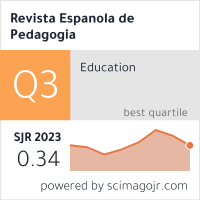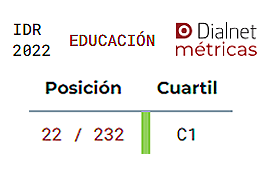Reseña bibliográfica: Cantón-Mayo, I. (2024). Las escuelas rurales del valle de Jamuz y la Valdería. Eolas Ediciones. 354 pp.
Abstract
School is children’s first point of reference when they leave the family environment and it opens the door to the outside world for them. However, it has never been studied in sufficient depth or valued highly enough. The impact of the school centre on shaping children’s minds is reflected in a saying attributed to Churchill: if we live in a hovel, we will act like beggars, but if we live in a palace, we will act like princes. Evidently, the school building will shape children’s vision and behaviour in their earlier years, and so studying it and its physical characteristics is of particular importance for the future of the adults.
This work by Dr Cantón seeks to recover the heritage of schools that are now mainly disused in two districts in León: the Jamuz valley and la Valdería. Both areas are located close to La Bañeza and the author justifies selecting them for study by the closeness to their origins and a personal preference for reclaiming schools in an area where it seems inevitable that they will disappear.
The book opens with a chapter that summarises the context of the schools studied and references to the school architects who designed them. The context refers to the acceptance of the administrative division of the districts studied, without questioning debatable aspects of their allocation to the valleys of the rivers Jamuz and Eria where the school buildings described are physically located. The importance of the architects in the years before the Spanish civil war is noted, with the intervention of Antonio Flórez, who headed the School Construction Office of the Ministry of Education, and Andrés Sánchez Sepúlveda, with whom he cooperated in the plans for the schools in Nogarejas. After the war, architects from León stand out: Ramón Cañas del Río, Juan Torbado, Luis Aparicio Guisasola, and Daniel Calleja.
The central chapters provide an inventory of schools by council, grouping in each one the villages that they contain. So, the district of Jamuz has four councils: Alija del Infantado, Quintana del Marco, Quintana y Congosto, and Santa Elena de Jamuz. Meanwhile, the councils in the Eria Valley are: Castrocontrigo, Castrocalbon, and San Esteban de Nogales. In total, these cover 25 locations, most of which have two and some three school buildings. These locations provide a broad journey through the two districts of León on which this study focusses. The documentary recovery of various school buildings that are now gone was only possible through intensive archival work and is something that stands out.
There are significant differences in how school buildings were constructed: the oldest schools were the result of the impetus of each village’s residents, who, working communally in shifts, would build a humble single-storey school building with a pitched roof and one or two classrooms to house a large group of students from the place. The case of Jiménez is striking, as to build the school in 1929, they had to lease out farmland, dispense with guards, or move forward the payments of the rent charged for communal land. Most schools from around 1900 were built by the villagers’ own labour.
However, the 1930s saw the intervention of the Educational Administration, which distributed funds for building schools, with the architect Antonio Flórez (a descendent of the philanthropists from León who had founded the Santa Luisa home for the elderly) as director of the School Construction Office in Madrid. In 1931, this architect along with Andrés Sánchez Sepúlveda drew up the plans for the first school in Nogarejas and for the one in Congosto.
In 1953, the School Constructions Law was passed, which subsidised half of the costs of school building, and the majority of towns and villages made use of this, either to construct new school buildings (as in Quintana, Alija, Herreros, Pinilla, and others) or to thoroughly modify them (as in the case of Castrocalbón).
The time span of the buildings in Jamuz and la Valdería is the same as that since the establishment of public schooling in Spain: from the Quintana report of 1813, through the Moyano law of 1857, up to the 2020s. This study is always based on documentary evidence, which substantiates each school having existed or its continued survival.
So, the first schools in the area appear in documents from the Provincial Council and in the tax payments for 1900, but there are older ones. Madoz mentioned these in his study of 1857, and almost none of them remain open today, as in the cases of Nogarejas, Alija, Navianos, Quintana del Marco, Quintana y Congosto, Torneros de Jamuz, Castrocontrigo, Morla, etc. These schools, which were open for the whole academic year, mainly no longer exist, having been replaced by others in the 1930s and 1950s.
With regards to times when the schools were open, data are provided about seasonal schools that were open during the three months of winter in places such as Genestacio, Herreros de Jamuz, Santa Elena, Villanueva de Jamuz, Quintana del Marco, Castrocalbón, Pinilla, Nogarejas, etc.
In the case of villages such as Palacios de Jamuz, Tabuyuelo, Felechares, Calzada, Torneros de la Valdería, Pobladura de Yuso, and others, there is no reference to schools in Madoz’s work.
In any case, the oldest school mentioned is in Nogarejas (in the photo on the cover of the book), where in 1661 Domingo Álvarez was named as the village’s teacher. The newest school, which sadly has already closed, is the one in Quintana del Marco, from the 1990s, which has been categorised as an escuela chalet (a cottage school, as the locals call it). Owing to the decline of the villages and falling pupil numbers, no new schools have been built in the area since 2000.
The fates of the school buildings vary widely after their closure, mostly in 1981: from demolition (as in Torneros de la Valdería), and falling into disrepair (like the ones in Tabuyuelo and Quintanilla de Flórez) to disputes over restoring them to turn them into cultural centres (San Esteban, this is the smallest category), village cafes and bars (Nogarejas), medical centres (as also Nogarejas, San Esteban, Jiménez, and Palacios), and even mortuaries, as in Santa Elena with the teachers’ homes. The group of schools of Castrocontrigo, which had almost 900 students, now has just 9, surviving as a rural school group where various levels are taught together. In other cases, they remain closed, awaiting a destiny that the neighbours will decide in due course.
Citación recomendada | Recommended citation
Prieto Carnicero, L. A. (2025). Cantón-Mayo, I. (2024). Las escuelas rurales del valle de Jamuz y la Valdería [The rural schools of the Jamuz valley and la Valdería]. Eolas Ediciones. 354 pp.. Revista Española de Pedagogía, 83(291). https://doi.org/10.22550/2174-0909.4109
Licencia Creative Commons | Creative Commons License
Esta obra está bajo una licencia internacional Creative Commons Atribución-NoComercial 4.0.
This work is licensed under a Creative Commons Attribution-NonCommercial 4.0 International License








